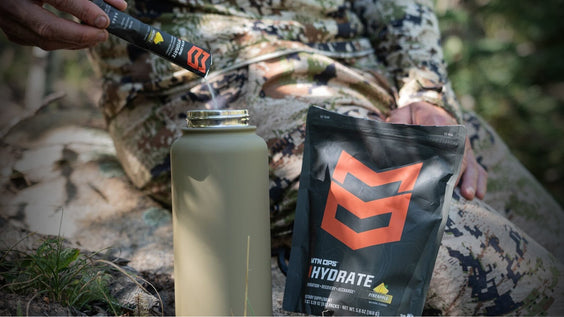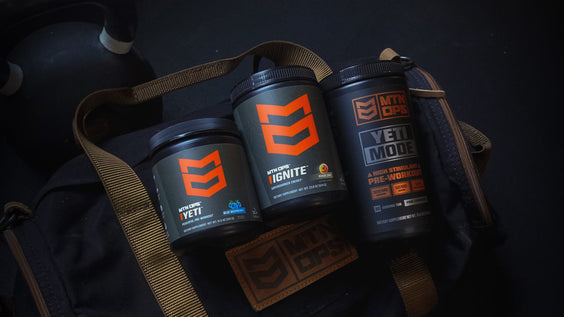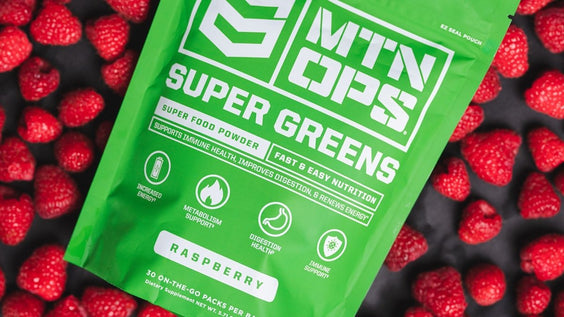

Testosterone, Demystified: Separating Fact from Fiction
Apr 02, 2025
By MTN OPS TEAM
Not many hormones that have made it into the mainstream the way that testosterone has. Despite its popularity, testosterone seems to be shrouded in a mystery that seems to overshadow its importance – for men and women.
Misinformation creates confusion. Unfortunately, topics of health and performance are plagued with it. This confusion leads to indifference and indifference leads to dismissal.
To say dismissing testosterone would be a disservice would be a massive understatement. It’s time to cut through the confusion created by modern lifestyle, conflicting health advice, and all-around myths about this essential hormone and get to the truth.
Myth: “Testosterone is Just About Sex Drive and Muscle Mass”
Simple Fact: Testosterone influences nearly every system in the body.
Testosterone is an anabolic hormone that is responsible for building and remodeling tissue, especially muscle mass. It also has a crucial role in supporting a healthy libido. But only attributing testosterone to these two areas is extremely shortsighted.
Testosterone concentrations have been shown to influence cognitive function, mood, metabolism, and bone mineral density to name a few (source). Significant changes in testosterone concentrations can mean drastic changes in one or all of these functions.
Taking steps to support testosterone health means supporting total body health.
Myth: “More Testosterone is Always Better.”
Simple Fact: The accepted health range for blood testosterone concentrations is very wide and advantages within this healthy range aren’t straight forward.
It is generally accepted that healthy testosterone blood concentrations for men range between 300 to 1,000 nanograms per deciliter (ng/dl) and 15 to 70 ng/dl for females.
While there is a good stack of research demonstrating the benefits of maintaining healthy testosterone concentrations when compared to hypogonadal conditions, the picture gets a little blurred when looking at differences in testosterone concentrations within a “healthy” range.
A 2001 review argues that despite playing an influential role, testosterone, like all hormones, is just one part of a cascade that results in outward expression. There are other compounds, like sex-hormone binding globulin (more commonly known as SHBG), that can bind to testosterone making it less bioavailable than a non-bound molecule of testosterone (aka free testosterone). Testosterone also has to interact with a cell to cause a physiological change which requires the cell to have an androgen, or testosterone, receptor.
This picture gets even more muddled once lifestyle and psychological conditioning start to get added.
All of these factors influence outward expression of the benefits of testosterone. To single out testosterone concentrations as the only factor that matters is myopic and misses the bigger picture of the intricacies of hormonal interaction and outward expression.
Myth: “Only Old Men Have to Worry About Low Testosterone.”
Simple Fact: Multiple lifestyle factors, beyond age, play a significant role in Testosterone concentrations.
It is generally accepted that testosterone levels naturally dip somewhere after 20 years (source). However, the extent and rate of this decline are debated (source, source), especially in active healthy populations (source).
Lifestyle choices, on the other hand, have continually been shown to influence testosterone concentrations, independent of age.
Obesity has been negatively associated with testosterone levels. A 2009 study from Clinical Endocrinology found that obese men exhibited lower testosterone levels than their non-obese counterparts. Additionally, lifestyle changes that positively affect body composition (physical activity and caloric restriction) were shown in a 2014 study to positively affect testosterone concentrations.
Sleep is another crucial pillar to maintaining healthy testosterone concentrations. A 2011 study examining the effects of one week of sleep restriction (getting five hours of sleep) decreased testosterone levels by 10% to 15%.
Finally, stress management is critical to maximize testosterone levels. Stress elevates cortisol, which negatively affects testosterone production (source). Controlling stress can help keep cortisol levels low, promoting testosterone concentrations.
Myth: “Lifting Heavy Weights is the Best Way to Boost Testosterone”
Simple Fact: To a point, but overtraining and poor recovery sabotage testosterone concentrations.
Resistance training and other high-intensity activities have been shown to cause temporary rises in testosterone levels, but these changes are often short-lived. As previously discussed, the real benefit is seen in facilitating a healthy body composition. These changes result in maintaining meaningful chronic changes in testosterone levels.
That being said, overtraining has been shown to alter testosterone concentrations and its relationship to cortisol (source). When resistance training is taken too far, it can start to negatively affect testosterone concentrations and hormonal balance.
When it comes to exercise, finding the sweet spot between changing body composition and overtraining is the secret to supporting healthy testosterone levels.
Myth: “Diets Don’t Affect Testosterone Levels.”
Simple Fact: Specific nutrients are essential for testosterone synthesis.
Macronutrients and micronutrients are essential for testosterone synthesis.
A 2021 meta-analysis of six studies found that men on low-fat diets had significantly lower testosterone levels than those consuming moderate to high fats. Testosterone is synthesized from cholesterol, making dietary fats critical.
Micronutrients are also important catalysts to testosterone synthesis. Zinc and magnesium intake can have big implications for testosterone levels. A 2023 systematic review demonstrated an association between zinc and testosterone levels and that zinc supplementation helped support healthy testosterone levels. Likewise, research has found a strong correlation between magnesium consumption and anabolic hormone concentrations, especially testosterone. These findings were supported in a 2010 study that demonstrated four weeks of high magnesium supplementation (10mg/kg/day) promoted testosterone levels in both active and sedentary individuals.
It isn’t a secret. Alcohol consumption causes a cascade of negative effects through the body. A 2022 review examining the effects of alcohol consumption noted that consuming large amounts of alcohol on a regular basis is associated with a decrease in testosterone. Researchers point to “increases in hypothalamic-pituitary-adrenal axis activity, inflammation, and oxidative stress” as primary reasons for these changes in concentration.
Myth: “Testosterone is Only Important for Men”
Simple Fact: Testosterone plays a vital role in women’s health.
Despite normally having lower levels than those found in men, testosterone still plays a foundational role in women’s health. Multiple papers have called attention to testosterone’s role in sexual desire, bone density, strength performance, body composition, mood and energy levels (source, source).
The Bottom Line
Testosterone is a foundational hormone–for men and women. Allowing myths and cultural influence diminish it to nothing more than a fuel source for toxic traits in men is not only wrong, it can have negative health implications for both sexes.
Supporting healthy testosterone levels supports nearly every aspect of healthy daily living. Setting the record straight and clearing up the confusion around testosterone will ensure the full support of performance and longevity.













































